
What do you get when you combine 16,000 tons of travertine stone from Italy, 40,000 enamel-clad aluminum panels, a few enormous walls of glass, 24 acres of gardens, and over 500 varieties of plants? What you get is the magnificent, shimmering, twenty-first century acropolis known as the Getty Center. Perched 881 feet above sea level and inaugurated in December 1997, the Getty Center was designed by the modernist, award-winning architect Richard Meier.
Expanding on the formal base of the Modern Movement in architecture, Richard Meier has said that his intention was to create “…a notion of beauty molded by light.” In so doing, Meier has struck a balance between humanist, classical organization and organic forms.
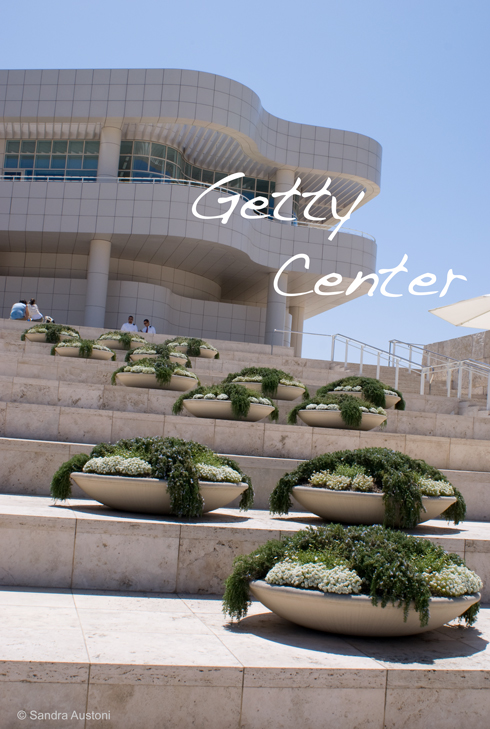
Arrival Plazza
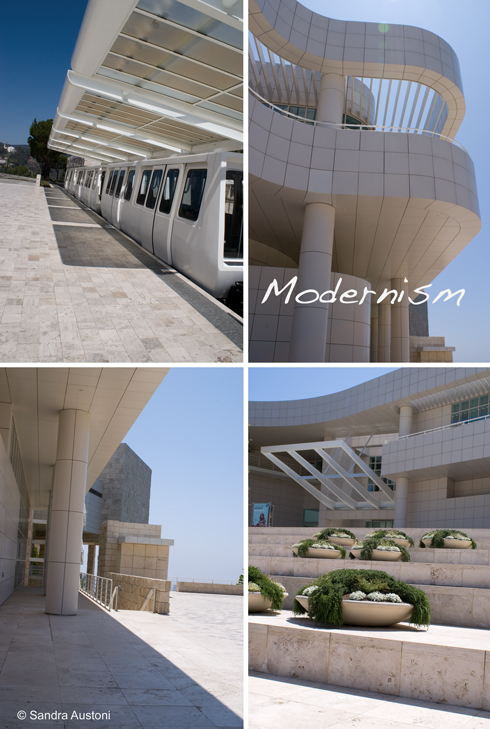
Richard Meier's signature
In designing the environment, Meier took into account both the topography and the clear, ambient light. He chose travertine stone for this project because it is often associated with public architecture and expresses qualities the Getty Center celebrates: permanence, solidity, simplicity, warmth, and craftsmanship. Meier was inspired by Renaissance cutting techniques to extract the stone out of travertine quarries that have been used for building since ancient Roman times. Meier and his team worked with the famous Mariotti family in the Bagni di Tivoli for over a year, importing the travertine from Italy to California.
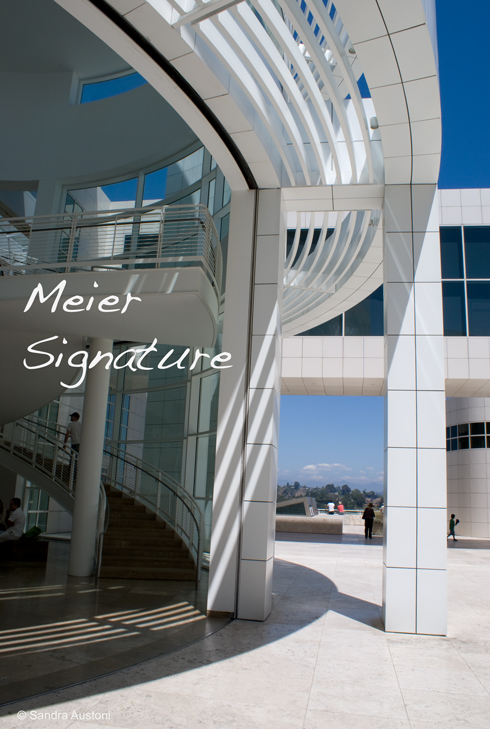
Museum Entrance Hall
Architectural buffs love to examine the myriad of ways that Meier investigated the Modern Movement, and claim that the details of the north and east buildings particularly incorporate characteristics of the 1920s Bauhaus movement in Europe, as well as Los Angeles' twentieth-century buildings by Richard Neutra, Frank Lloyd Wright and Rudolph Schindler.
In pursuing his passion for pushing the limits of Modernism to new and thrilling heights, Meier spared no expense. The Getty complex cost roughly $1 Billion to construct, and its exterior is a work of art unto itself.
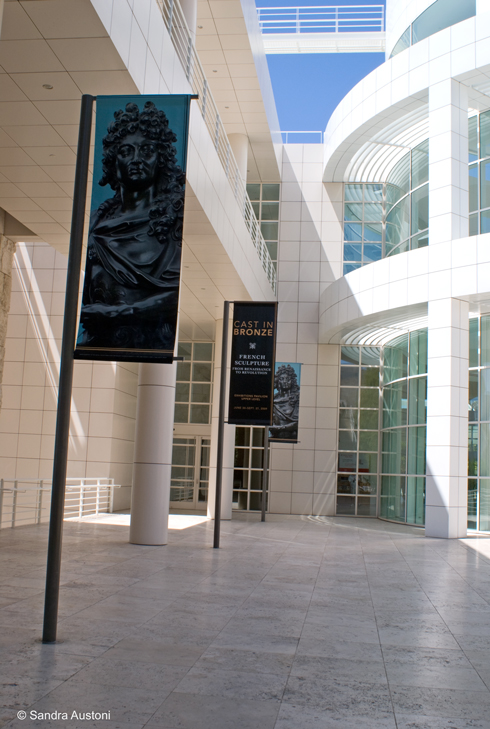
Museum Courtyard. The temporary exhibition was "Cast in Bronze" - French sculpture from Renaissance to Revolution.
Inside the complex resides an enormous collection of French furniture and decorative arts, Impressionist paintings, fine illuminated manuscripts, contemporary photography, and European drawings. The star of the show, of course, is Van Gogh's Irises. Not to be missed, it was reportedly acquired for $53.9 million.
After parking at the base of the hill, guests ascend to the top via two 3-car, computer-operated trams, where there are four exhibit pavilions and a visitor center with panoramic views. The museum itself is situated at the south east corner of the hill, providing a dominating view of the city. At the entrance of the museum, a glass lobby looks onto an inner garden.
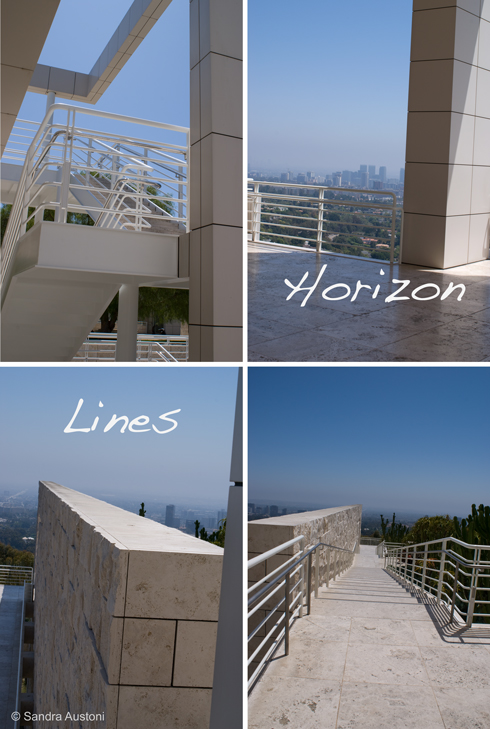
The panoramic view of Los Angeles
To the east are city landscapes, to the south, the cactus garden and city views of the South Bay and the Palos Verdes peninsula. At the north promontory, the landscaping blends into the hillside surroundings. The Getty Center buildings and gardens span across 24 acres, and the formal landscaping was designed by Laurie Olin to complement and enhance Meier's design, providing a balance between man-made and the natural elements. There are fountains in the Museum Courtyard and the Central Plaza, and various shaded hideaways to sit quietly and soak in the scenery.

South Promontory and Cactus Garden
The living work of art known as the Central Garden, created by renowned artist Robert Irwin, lies at the heart of the Getty Center. The 134,000-square-foot design features a natural ravine and tree-lined walkway that crosses a stream and winds through a variety of plants. This walkway gradually descends to a plaza where beautiful bougainvillea scents the air.
Irwin defined the Central Garden as “always changing, never twice the same.” Its color scheme is primarily lavender and white, perhaps coinciding with the colors of Van Gogh's Irises. A beautiful example of this in the month of June is the purple-flowering Jacaranda trees in the small courtyard in front of the auditorium.

A beautiful Sempervivum succulent along the walkway

The gardens offer many beautiful shades
Since the Center opened in 1997, the Central Garden has evolved as its plants have grown and been trimmed, and new plants are constantly being added to the palette. All of the foliage and materials of the garden have been selected to accentuate the interplay of light, color, and reflection. The next time you feel overwhelmed by weeding your own garden, take heart in the fact that it requires thirty-two full-time gardeners working year round to tend Irwin's ever-changing work of art. So why not pay a visit to the Getty and be inspired to think BIG.

Central Garden
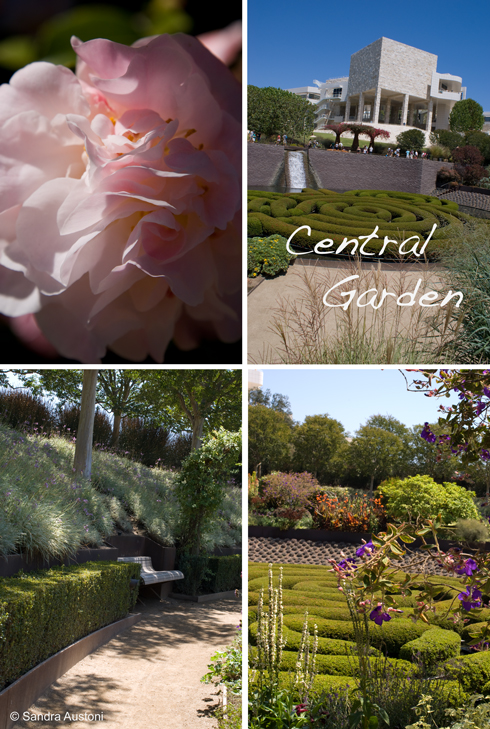
Central Garden
For more information
How To Get There:
1200 Getty Center Drive (approximately 12 miles northwest of downtown Los Angeles)
Los Angeles, California 90049
(310) 440-7300
For more information, visit their website.
Admission is free and parking is $15
Hours of operations:
Tuesday–Friday: 10:00 a.m.–5:30 p.m.
Saturday: 10:00 a.m.–9:00 p.m.
Sunday: 10:00 a.m.–5:30 p.m.
Monday: CLOSED
Interactive map
Check out our interactive map of Southern California to see where I took all the pictures featured in this article.
Text by Heather Farlinger.
Heather is a talented writer and producer based in Montreal. To contact Heather.
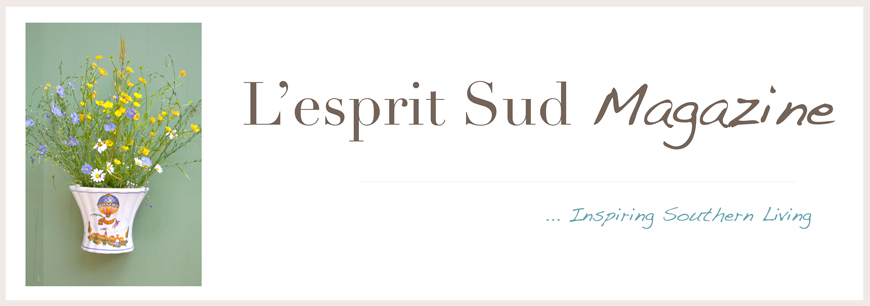
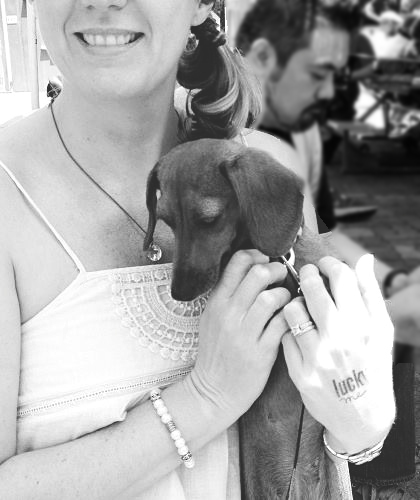

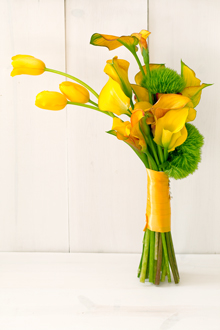
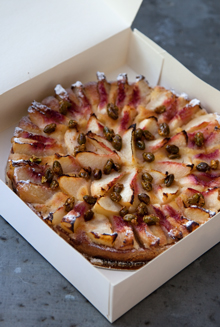
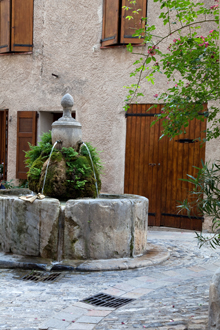

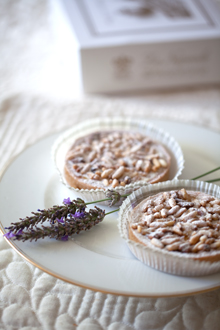

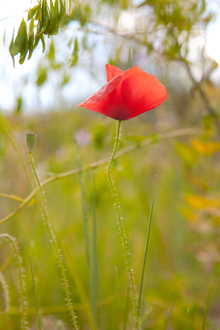

Love your blog and I love the Getty!
ReplyDeleteWow! Great pictures. Thank you for a wonderful tour of the Getty. Now I can't wait to visit with my kids.
ReplyDeleteThanks you for you comments... The Getty is indeed a wonderful place to spend the day.
ReplyDelete